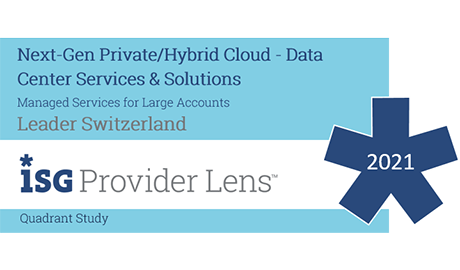Case study: Swiss Re
Why gaze off into the distance? See the cloud that lies so near!
Corporate data centres are slow, expensive and high maintenance, making them outdated. In their place, cloud solutions can quickly be adapted to customer needs on a modular basis. Infrastructure and data remain in Switzerland on request.
Text: Flavian Cajacob, photos: Michele Limina, Published in the NZZ supplement 9 November 2017
Constant and rapid advances in digitalisation are increasingly affecting the IT strategy at companies. These are gradually doing away with their own corporate data centres, which sometimes even house servers that are kept in cooled cellars. Instead, they are relocating their entire IT infrastructure into what are referred to as ʻclouds’, along with all their applications and data. What at first glance appears insignificant, actually represents a major encroachment into the IT culture of a company, involving a major rethink on the part of managers and employees. “If you are looking to change to a cloud model, order a ready-made infrastructure consisting of processing power, memory capacity and tailor-made services”, says Marcel Walker, Head of Network & Cloud at Swisscom.
Case study: Swiss Re
The reinsurance company, Swiss Re, is a major Swisscom customer, and constantly relies on external cloud solutions. Rainer Lischer is Cloud Manager at Swiss Re and is responsible for the smooth implementation of the cloud model. The main reason Swiss Re is making this change is because they want to introduce new digital business models. According to Lischer, Swiss Re expects the cloud to bring faster access to digital innovation, a faster time-to-market for products and services, improved cost efficiency and greater flexibility.
The end-to-end conversion to the cloud model allows Swiss Re to make the digital transformation, and is why it is part of their business strategy. Their cloud model relies on public cloud and private cloud services. This means that, depending on the application and the cloud functionality available, applications either operate on private or public clouds supplied by global providers. In contrast to a public cloud, a private cloud supports customised requirements.
“You have to actively control your cloud consumption so that the costs do not get out of hand”
Rainer Lischer, Cloud Manager at Swiss Re
Swiss Re expects to get more for their money from the cloud than when they produce all their IT services themselves. “But you have to actively control your cloud consumption so that the costs do not get out of hand”, explains Lischer. Another thing he says, is that when it comes to security and agility, it is unlikely for corporate IT to be able to compete with the billion-dollar investments made by large cloud providers. This is the reason why cloud applications are at least as secure as those operated in-house.
According to Lischer, a change of this nature always meets resistance. “But, I'm convinced that the pendulum will swing in the other direction. In fact, in the near future, people will be concerned when an application does not come from the cloud. The cloud will become the standard.”
Low entry barriers
Swisscom was able to offer Swiss Re such a solution with their private cloud, so that they can run their applications in the cloud while complying with all the regulatory requirements, such as the Swiss Data Protection Act. Important in this context is that the data in the cloud belonged to the customer, Walker emphasises. Swisscom does not do use the data for business purposes. They simply provide the infrastructure and have absolutely no knowledge of the contents of the data beyond this.
Swiss Re has been working on migrating its applications and platforms for a good year now. This process in the cloud is accompanied by a master governance and compliance concept that identifies the risks involved and guarantees the necessary controls. According to Lischer, Swiss Re is deliberately taking this step, with the focus being placed on legal, regulatory and security aspects. While Swiss Re is concentrating on the above, Swisscom is ensuring that the processes function as agreed. To make sure they comply with the regulatory requirements of the Swiss Financial Market Supervisory Authority (FINMA) for banks and insurance companies, Swisscom undergoes regular auditing by third parties.
From the perspective of process and technology, introducing the cloud model is complex. With that said, Lischer describes cultural change as the largest challenge at Swiss Re. The cloud model represents a real paradigm shift in the question of how IT is run, and this requires a great deal of persuasion, training and the right skills to implement it. It is all about softening historically grown structures, adapting familiar practices and developing new skills, processes and roles.
“We have to keep up with the rapid pace of technological change all the time.”
Marcel Walker, Head of Network & Cloud at Swisscom
For Swisscom, the biggest challenge is keeping the overall architecture up-to-date, Walker says. “We have to keep up with the rapid pace of technological change all the time.” Swisscom is constantly challenged by the aspect of security as well. And Swiss Re expects constant adaptation to the latest technologies and related services. Swiss Re wants to push ahead with its own digitalisation strategy and continue to open up new business opportunities.

Newsletter
Would you like to regularly receive interesting articles and whitepapers on current ICT topics?
More on the topic



